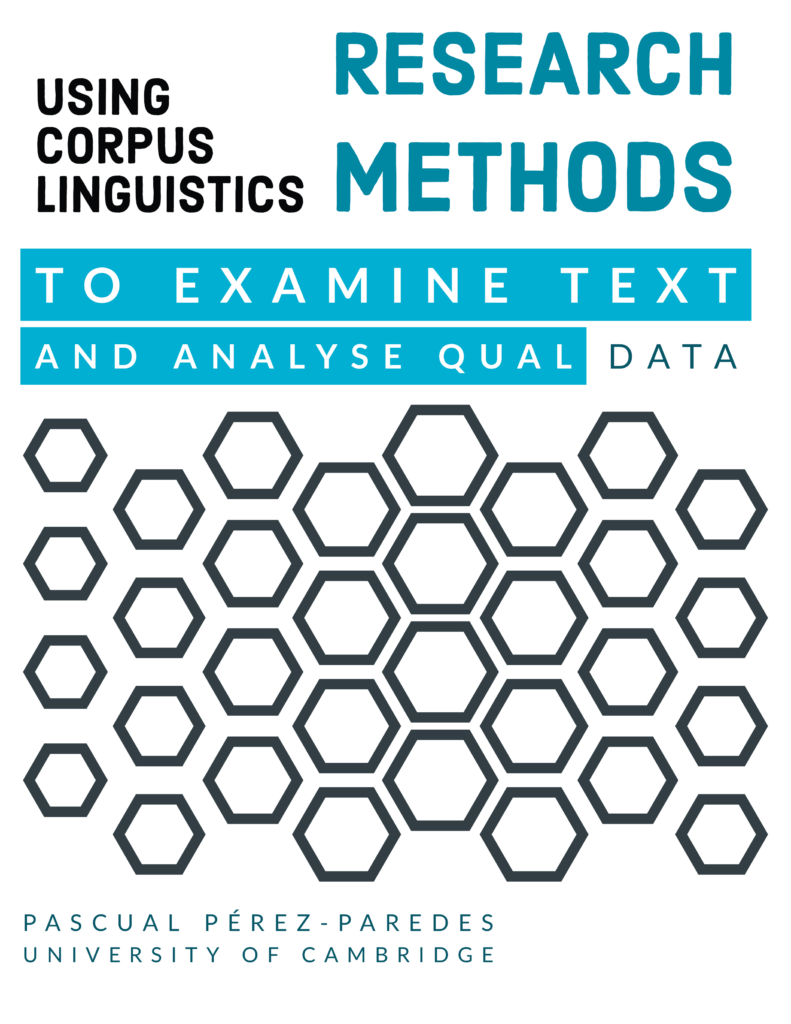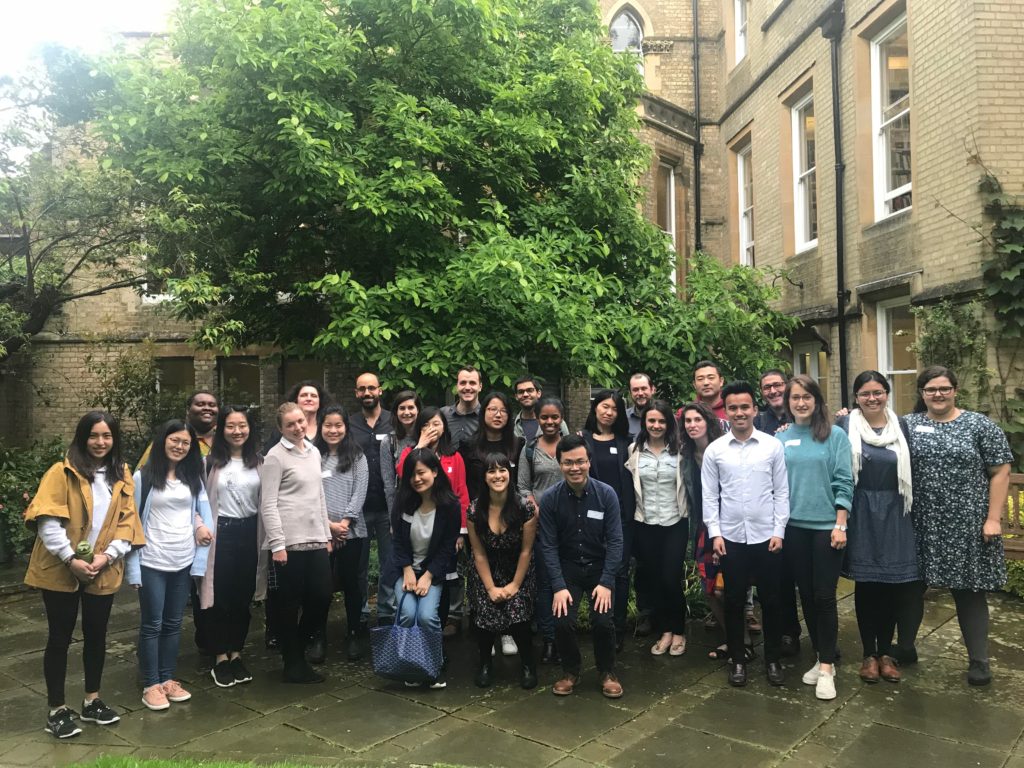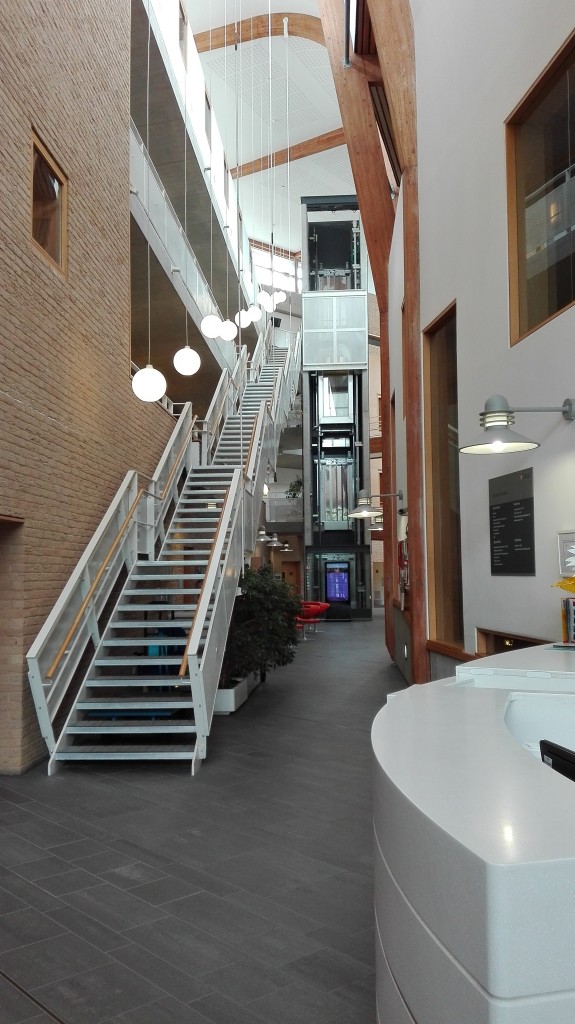
In this session we’ll look at some corpus linguistics methods that can be used to analyse a text or a group of texts automatically.
You can find further information and resources in my book Corpus Linguistics for Education. A Guide for Research. Routledge.
In a way, corpus linguistics could be seen as a type of content analysis that places great emphasis on the fact that language variation is highly systematic.
We´ll look at ways in which frequency and word combination can reveal different patterns of use and meaning at the lexical, syntactical and semantic levels. We will examine how we can make use of corpus linguistics methods to look at a corpus of texts (from different or the same individuals) and single texts and how these compare to what is frequent in similar or identical registers or communicative situations. This way, we can not only find out what is frequent but also what is truly distinctive or central in a given text or group of texts.
Students are encouraged to download and install Antconc on their laptops:
URL: http://www.laurenceanthony.net/software/antconc/
File converter tool URL: http://www.laurenceanthony.net/software/antfileconverter/
CL research methods
There are different well-established CL methods to research language usage through the examination of naturally occurring data. These methods stress the importance of frequency and repetition across texts and corpora to create saliency. These methods can be grouped in four categories:
–Analysis of keywords. These are words that are unusually frequent in corpus A when compared with corpus B. This is a Quantitative method that examines the probability to find/not to find a set of words in a given corpus against a reference corpus. This method is said to reduce both researchers´ bias in content analysis and cherry-picking in grounded theory.
–Analysis of collocations. Collocations are words found within a given span (-/+ n words to the left and right) of a node word. This analysis is based on statistical tests that examine the probability to find a word within a specific lexical context in a given corpus. There are different collocation strength measures and a variety of approaches to collocation analysis (Gries, 2013). A collocational profile of a word, or a string of words, provides a deeper understanding of the meaning of a word and its contexts of use.
–Colligation analysis. This involves the analysis of the syntagmatic patterns where words, and string of words, tend to co-occur with other words (Hoey, 2005). Patterning stresses the relationship between a lexical item and a grammatical context, a syntactic function (i.e. postmodifiers in noun phrases) and its position in the phrase or in the clause. Potentially, every word presents distinctive local colligation analysis. Word Sketches have become a widely used way to examine patterns in corpora.
–N-grams. N-gram analysis relies on a bottom-up computational approach where strings of words (although other items such as part of speech tags are perfectly possible) are grouped in clusters of 2,3,4,5 or 6 words and their frequency is examined. Previous research on n-grams shows that different domains (topics, themes) and registers (genres) offer different preferences in terms of the n-grams most frequently used by expert users.
Quote 1: what is a corpus?
The word corpus is Latin for body (plural corpora). In linguistics a corpus is a collection of texts (a ‘body’ of language) stored in an electronic database. Corpora are usually large bodies of machine-readable text containing thousands or millions of words. A corpus is different from an archive in that often (but not always) the texts have been selected so that they can be said to be representative of a particular language variety or genre, therefore acting as a standard reference. Corpora are often annotated with additional information such as part-of-speech tags or to denote prosodic features associated with speech. Individual texts within a corpus usually receive some form of meta-encoding in a header, giving information about their genre, the author, date and place of publication etc. Types of corpora include specialised, reference, multilingual, parallel, learner, diachronic and monitor. Corpora can be used for both quantitative and qualitative analyses. Although a corpus does not contain new information about language, by using software packages which process data we can obtain a new perspective on the familiar (Hunston 2002: 2–3).
Baker et al. (2006). A glossary of corpus linguistics. Edinburgh: UEP.
Quote 2: introspection
Armchair linguistics does not have a good name in some linguistics circles. A caricature of the armchair linguist is something like this. He sits in a deep soft comfortable armchair, with his eyes closed and his hands clasped behind his head. Once in a while he opens his eyes, sits up abruptly shouting, “Wow, what a neat fact!”, grabs his pencil, and writes something down. Then he paces around for a few hours in the excitement of having come still closer to knowing what language is really like. (There isn’t anybody exactly like this, but there are some approximations.)
Charles Fillmore. Directions in Corpus Linguistics (Proceedings of Nobel Symposium 82, 1991),
Quote 3: evidence in a corpus
We as linguists should train ourselves specifically to be open to the evidence of long text. This is quite different from using the computer to be our servant in trying out our ideas; it is making good use of some essential differences between computers and people.
[…] I believe that we have to cultivate a new relationship between the ideas we have and the evidence that is in front of us. We are so used to interpreting very scant evidence that we are not in a good mental state to appreciate the opposite situation. With the new evidence the main difficulty is controlling and organizing it rather than getting it.
Sinclair. Trust the Text. (2004:17)
Quote 4: why analyse registers?
Register, genre, and style differences are fundamentally important for any student with a primary interest in language. For example, any student majoring in English, or in the study of another language like Japanese or Spanish, must understand the text varieties in that language. If you are training to become a teacher (e.g. for secondary education or for TESL), you will shortly be faced with the task of teaching your own students how to use the words and structures that are appropriate to different spoken and written tasks – different registers and genres. Other students of language are more interested in the study of literature or the creative writing of new literature, issues relating to the style perspective, since the literary effects that distinguish one novel (or poem) from the next are realized as linguistic differences.
Biber & Conrad (2009:4)
Quote 8: sleeping furiously
Tony McEnery has outlined the reasons why corpus linguistics was largely ignored in the past possibly because of the influence of Noam Chomsky. Prof. McEnery has placed this debate in a wider context where different stakeholders fight a paradigm war: rationalist introspection versus evidence driven analysis.
Quote 9: epistemological adherence?
“Science is a subject that relies on measurement rather than opinion”, Bill Cox wrote in the book version of Human Universe, the BBC Show. And I think he is right. Complementary research methodologies can only bring about better insights and better-informed debates.
Hands-on workshop. Corpus analysis: the basics.
Tasks
3a Run a word list
3b Run a keyword list
3c Use concord plot: explore its usefulness
3d Choose a lexical item: explore clusters
3e Choose a lexical item: explore n-grams
3f Run a collocation analysis
Download the Conservative manifesto 2017 here and the Labour 2017 manifesto here
OR
Policy paper: DFID Education Policy 2018: Get Children Learning (PDF)
OR
Brown corpus text categories and the texts themselves identified.
Links
Representative corpora (EN)
Representative corpora (Register perspective)
MICUSP http://micusp.elicorpora.info
Corpus of research articles http://micusp.elicorpora.info
A list of corpora you can download.
Using NVIVO?
NVIVO node export and beyond



